Download and Deploy¶
Download links:
You can import this OVA appliance to your vCenter infrastructure. It is based on CentOS 7 and has the VMware tools enabled.
The appliance requirements are kept to a strict minimum so it can be executed in any vCenter installation. However, before deploying it, please read the system requirements.
Follow the next steps to deploy a fully functional vOneCloud:
Step 1. Deploying the OVA¶
Login to your vCenter installation and select the appropriate datacenter and cluster, where you want to deploy the appliance. Select the Deploy OVF Template.
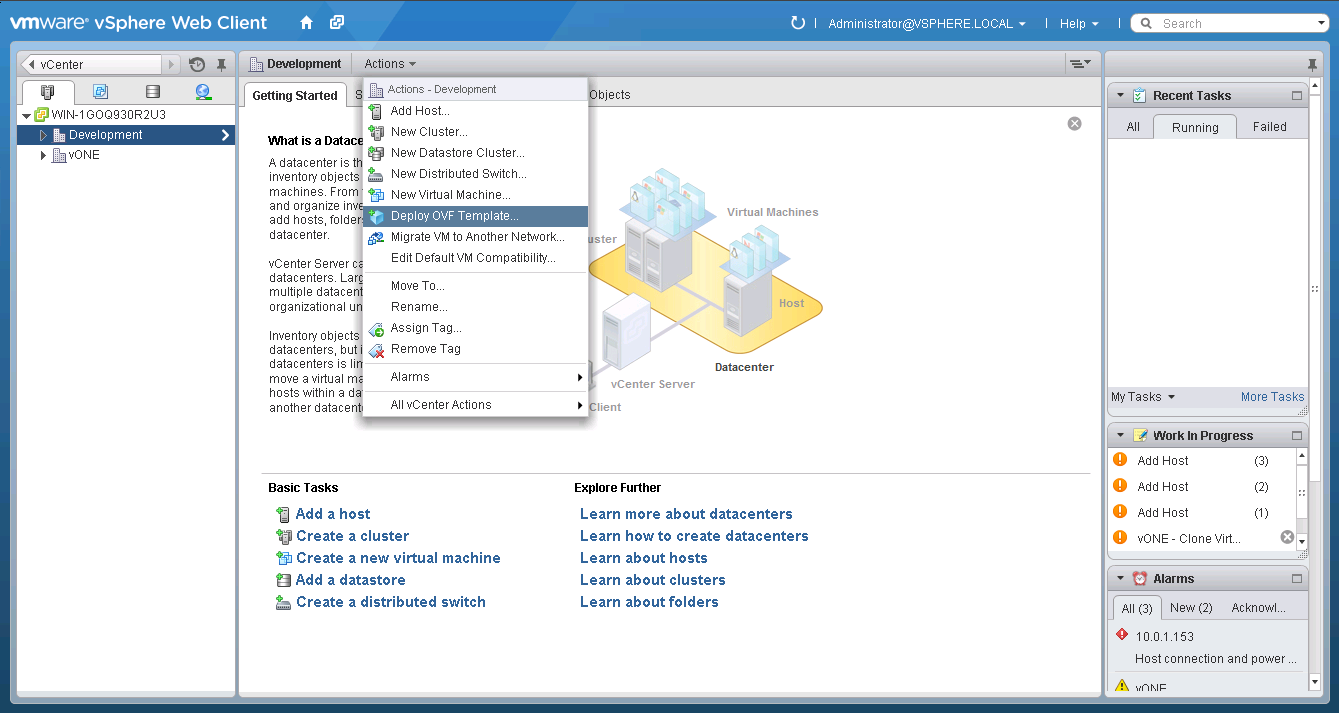
You have the option now to input the URL of the appliance (you can find it at the top of this page), or if you have previously downloaded it, you can simply browse to the download path as such:
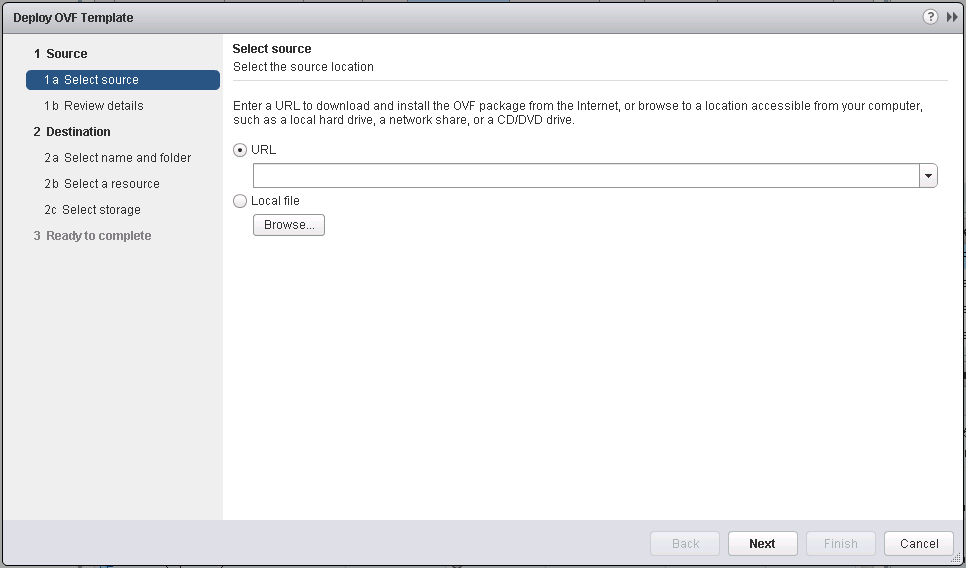
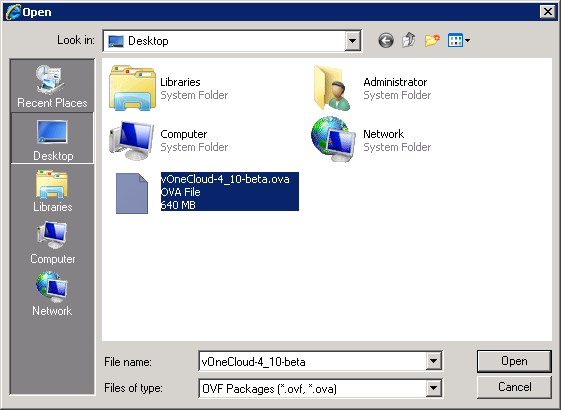
Select the name and folder:
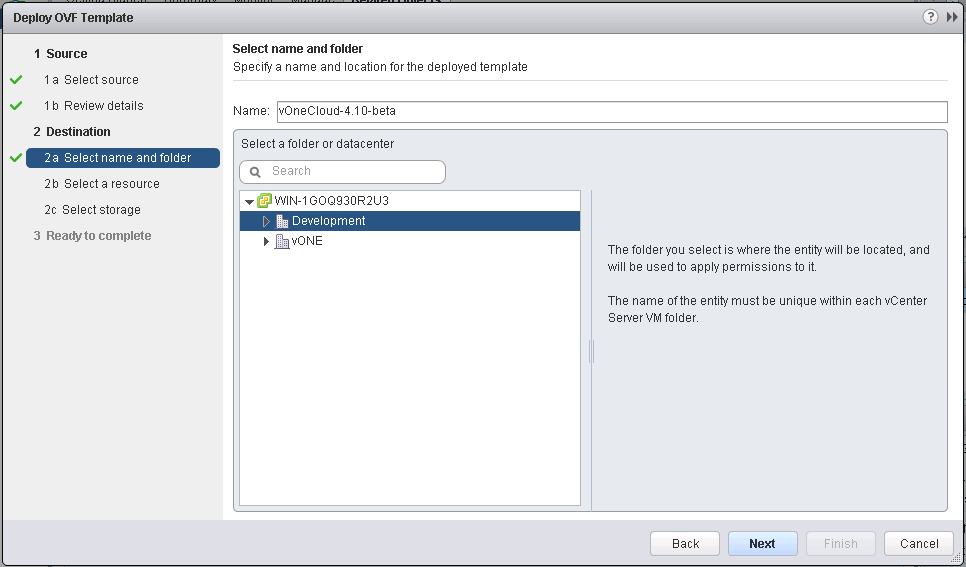
Select a resource to run the appliance:

Select the datastore:
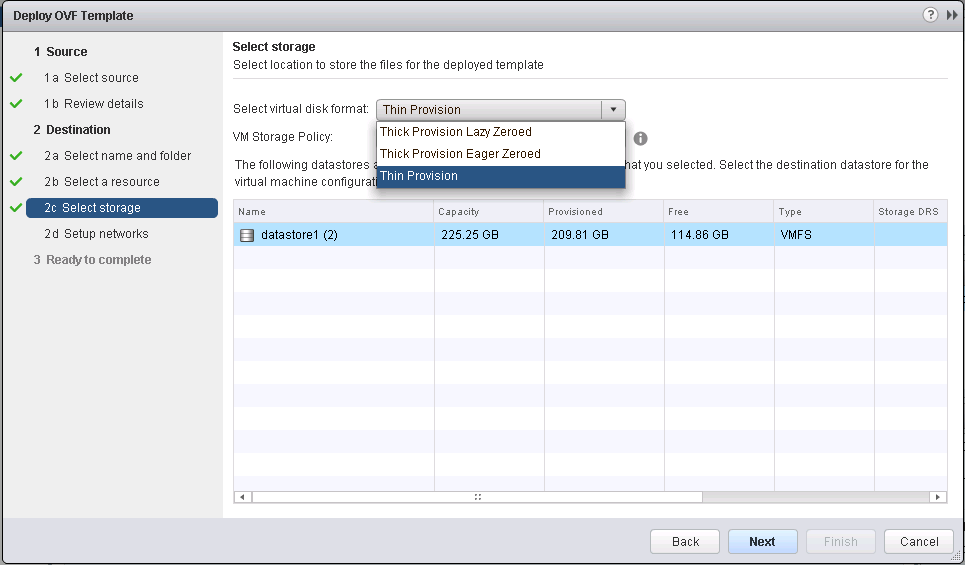
Select the Network. You will need to choose a network that has access to the vCenter hosts.
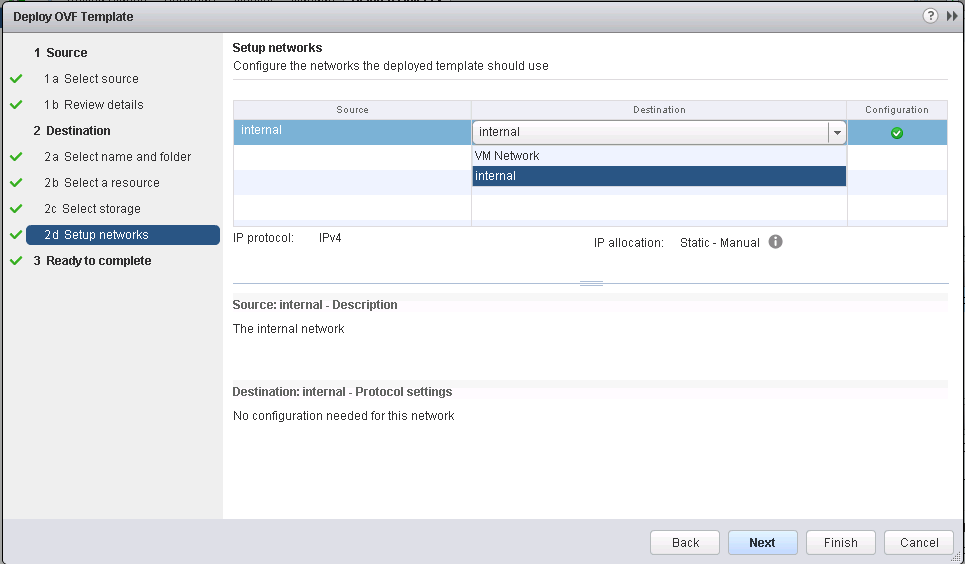
Review the settings selection and click finish. Wait for the Virtual Machine to appear in the cluster.
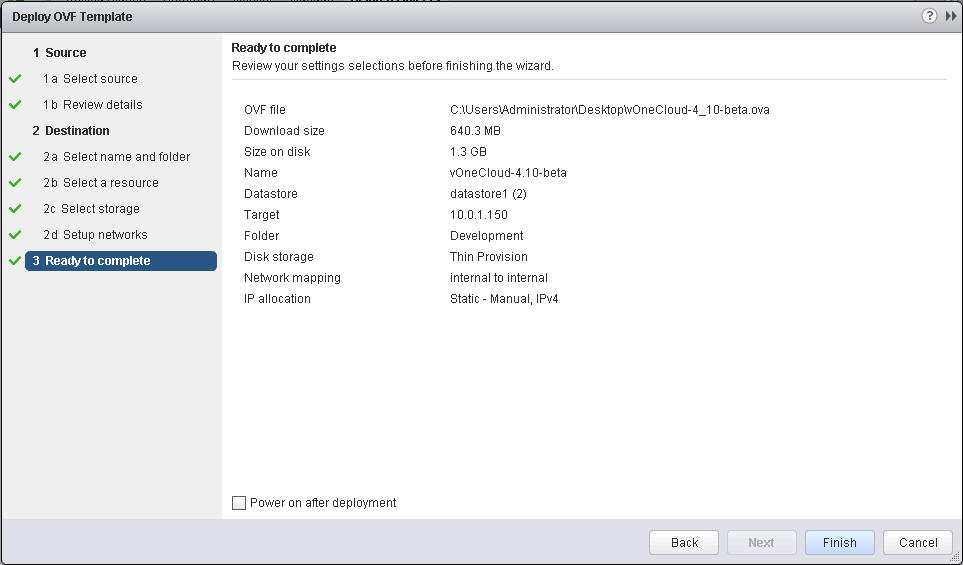
Now you can power on the Virtual Machine:
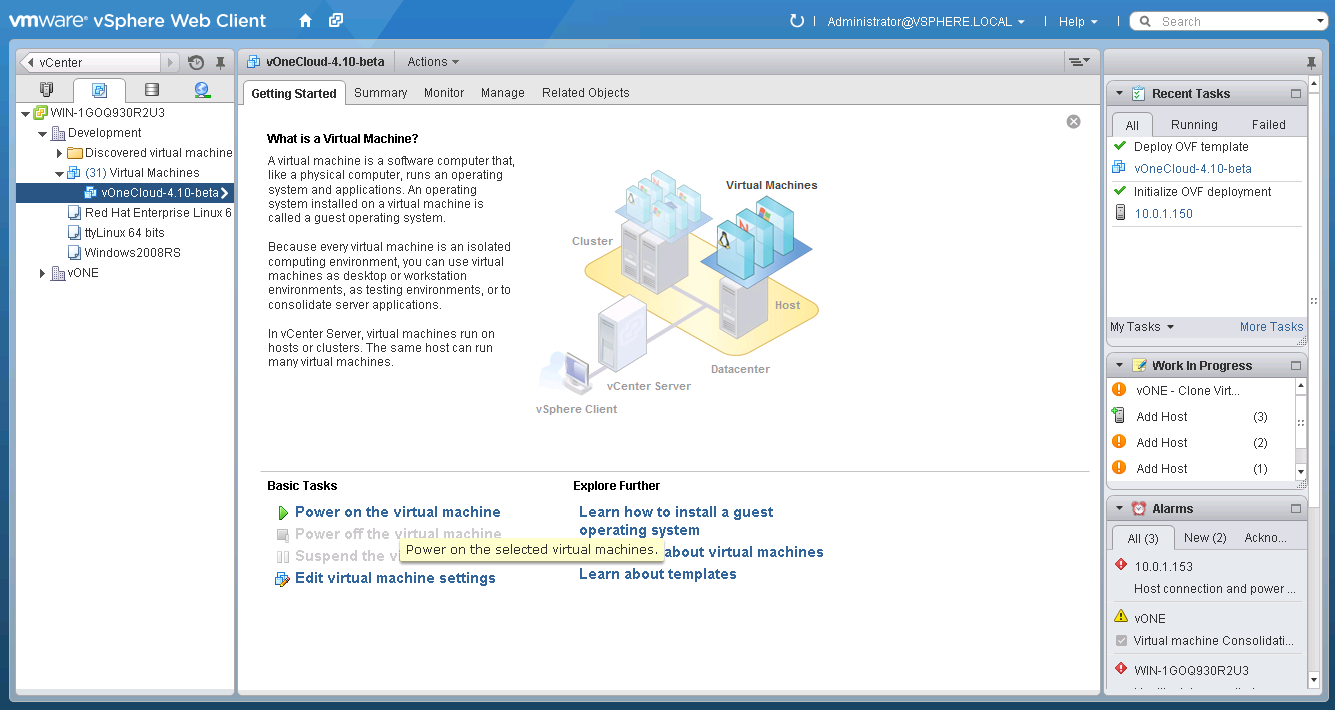
Allow for a few minutes for the Appliance start and report the IP.
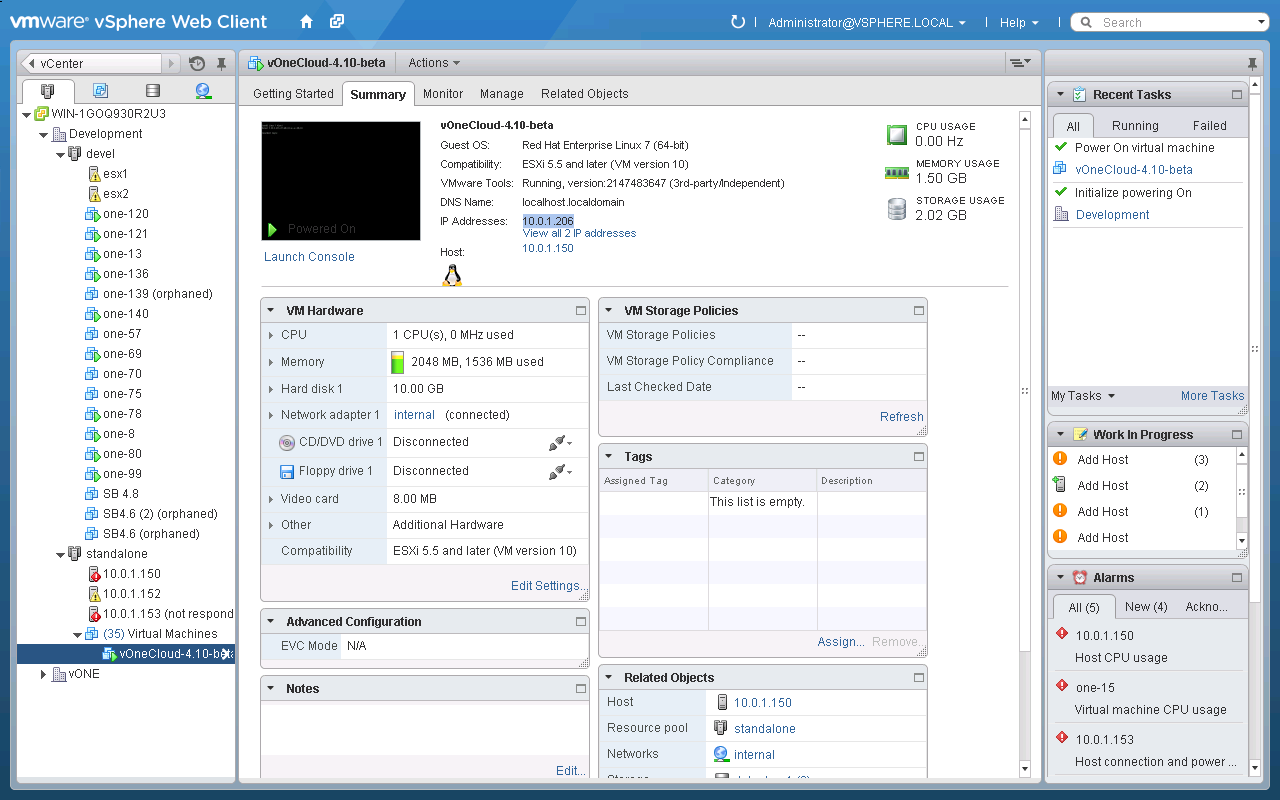
Step 2. Connecting to the Sunstone Interface¶
Now that you have the IP of the appliance you can open the Sunstone Web Interface: http://<appliance-ip>:9869.
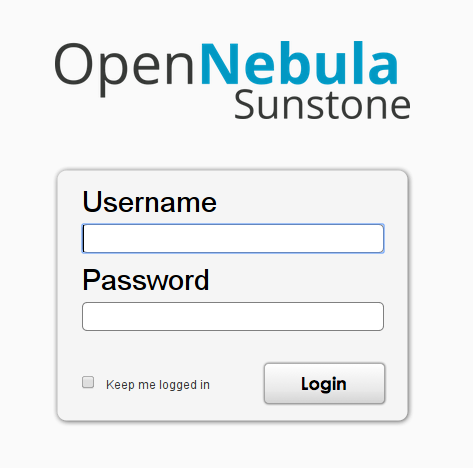
To login type in these credentials:
- Username: vOneCloud
- Password: opennebula
Now you will be able to use the out-of-the-box features of vOneCloud!
Advanced Usage [Optional]¶
Warning
This section is entirely optional and only advanced users should perform these actions.
If you make any changes to OpenNebula configuration files under /etc/one please note that they will be discarded and overwritten in the next vOneCloud upgrade. Only changes documented in this documentation: LDAP authentication and Hybrid cloud configuration will be supported.
Login to the Appliance¶
All the functionality you need to run your vOneCloud can be accessed via Sunstone. However, in order to enable some of the advanced features of vOneCloud some extra configurations steps are needed that must be performed in the command line of vOneCloud, and can be carried out opening a console in your vCenter client and log in with these credentials:
- Username: root
- Password: opennebula
Note
SSH access to the root account has been disabled.
Change oneadmin Password¶
The oneadmin password is opennebula by default. This can be changed by following these steps:
- Login into the Appliance as explained in the previous section
- Switch to the oneadmin user: # su - oneadmin
- Change the passsword: $ oneuser passwd oneadmin <newpassword>
- Write the auth file: $ echo oneadmin:<newpassword> > /var/lib/one/.one/one_auth
- Logout of the oneadmin account into the root account: $ exit
- Restart the OpenNebula service: # service opennebula restart
Note
All other user passwords can be changed in the Sunstone interface.
Configure the Network¶
vOneCloud tries to obtain its IP using DHCP on the network interface. If you need to configure a static network, follow generic instructions to configure the the static IP for RHEL 7 / CentOS 7 systems, for example the Configuring a Network Interface Using ifcfg Files guide.